Student Cooking On A Budget
22nd September 2023
All over the country students are returning to university or turning up for the first time. Whilst there will be excitement about the independence and experiences on offer, there may also be trepidation – some of this will be about money and budgeting, and there might also be anxiety about ‘how will I feed myself?’
We’ve gathered together some tips and tricks on how to make your budget go further, and to show you that you don’t need to live on baked potatoes or pesto-pasta for the duration of your university years!
Tip 1: Don’t go overboard on kitchen gadgets
You don’t need to go crazy and spend all your money on kitchen utensils & gadgets! Here are the essentials you need:
A saucepan, frying pan, roasting tray and baking tin will mean you can cook pasta dishes, stir-fries, oven chips and make a batch of Brownies as a treat. If you get a saucepan with a lid that has a built-in drainer that saves you buying a colander to drain your pasta (and saves washing up one more item!) Some saucepans also have markings for liquids on the inside, so you don’t need an additional measuring jug. Buy a good quality frying pan that will last you a lifetime; one that is non-stick will mean less washing up and you will need less oil and be less likely to burn your food! Make sure you know what type of hob you will be using as non-magnetic pans & saucepans don’t work on induction hobs for example.
Mixing bowls. You’ll need a small and large one. Essential for mixing, but also good for popcorn on movie nights, and serving a salad etc.
Storage containers. Useful for storing leftovers and also great for batch cooking. Look for ones with well-fitting lids that are microwave safe. They can also double as a lunch box. A water bottle that is insulated and keeps liquid hot and cold is great for taking a lunch of soup or a smoothie with you.
Tin opener, vegetable peeler, kitchen scissors, bottle opener, garlic crush. The latter is a bit of a wildcard and may seem an extravagance, but garlic is a quick way to add a lot of flavour to a dish but can be a pain to chop so a garlic crush makes it a doddle
Chopping boards. Invest in a good chopping board. Remember that a wooden one can’t be put in a dishwasher and consider, for hygiene reasons, getting one for veg & general, and a separate one for meat.
Grater. Cheese can be a staple for students. Don’t be tempted to buy pre-grated cheese as it costs a lot more. Buy a grater and grate a big batch at a time and keep in an air-tight container. You can also easily freeze grated cheese in an airtight sandwich bag; use it straight from frozen for your macaroni cheese for example.
Utensils. You’ll only need one small and one large knife, a heat-proof spatula for stirring and flipping food, a large spoon for serving. Don’t forget a tea towel too….
Larger items & gadgets. Consider asking for more pricey items as gifts, but consider if you really will use them enough to warrant the expense. Up and down the country there are unloved gadgets gathering dust in cupboards, you could even ask a friend or family member if they have one of these they no longer use:
- Toastie maker: an oozy cheese toastie is quick and satisfying, and toastie makers themselves are not expensive and easy to keep clean too.
- Blender: A full-size blender is great, but these are expensive and usually mean a lot of washing up and bits like blades going missing. If you use a blender mostly to blitz soup or make smoothies consider a more inexpensive stick blender, or a ‘nutribullet’ type hand blender which is quick to use and easy to clean.
- Electronic scales: If you are keen to use your university years to learn to cook and try new recipes, then small electronic scales are ideal.
- Slow Cooker: Slow cookers are no longer just something your grandparents used to use , they are great for batch cooking and the timer function means you can turn it on in the morning and return after a long day with a meal waiting for you. Not for everyone, so consider whether you would use it enough and also where you will put it, as counterspace in a shared kitchen is usually hard to come by.
- Air Fryer: Seemingly the must-have gadget at the moment! Useful for quick and cost-effective cooking. Do your homework and look at reviews as they vary hugely in price. Pay attention to the size, i.e. how much food it can cook, and how quick and easy it is to clean. It may be that a good old-fashioned microwave is a better investment than a slow cooker or air fryer, so think about what you are likely to cook, or leave it till your second semester when you know what you really need.
Tip 2: Plan, plan, plan
Here is my biggest tip…. Planning is probably the biggest money saver there is! Think about what you’ll eat in the next week and make a shopping list accordingly. You’ll be less likely to forget anything, and less tempted by impulse buys. It’s well known that shopping when hungry and not knowing what you want whilst pushing your trolley around has never ended well for anyone! Also get into a routine of when you go shopping – go once a week, always at the same time so it becomes part of your week. Don’t see it as wasted time, it will save you loads of money. Once you have done your overall budget you should know how much you have each week for food. Create a meal planner for a week and put the ingredients into an online shopping basket for your supermarket to see if you can make your budget work. Remember you also may need to buy things like washing up liquid, laundry detergent, shampoo etc, so keep money in the pot for these ‘non-food’ groceries. The Save the Student website has a good budget planner, or your banking app may have one too. When making your plan for the week try to not buy ingredients for a single dish only, you will see these as you create your shopping list, like having to buy a punnet of mushrooms when you only actually need 4 mushrooms for one recipe. If you are buying a bag of potatoes and a big bag is more economical then make sure you have potatoes in a few dishes, so you use them up. Avoid recipes where you need to buy expensive ingredients that you don’t use in anything else. Or if you really want to try something new, like Miso, then have a look at a few recipes that you like the look of that all use this ingredient so you know it won’t just languish in the fridge after you’ve bought it.
Tip 3: Supermarkets are not all created equal!
Pick a supermarket that is convenient for you but offers good value for money. A handy comparison website like www.trolley.co.uk lets you compare costs for your essentials across supermarkets to help you pick where to shop. Look into your supermarket’s loyalty scheme to see if you can boost your shop and make sure you use offers/coupons. Sign up to websites like MoneySavingExpert, UniDays and Student Beans which have coupons and deals that are worth looking out for. The Totum Card and App (formerly known as the NUS Extra Card) also has lots of offers, and don’t forget there are shops where you can get student discount like Boots for your toiletries. Locate your supermarket’s markdown section – this is where food that is close to the expiry date is sold at a discount, usually stickered with a yellow label. Don’t buy yellow label products that you don’t need just because they are reduced though!
It is worth knowing that supermarkets separate their products into different categories, using fancy marketing language when sometimes the difference in taste is small, but the difference in cost is large! This is how supermarkets categorise their food:
Premium. Words like 'finest' or 'extra special' imply it's a treat and worth the expensive price tag
Branded. Products like McVitie's Jaffa Cakes or Heinz Baked Beans
Own brand. These usually look slightly similar to manufacturers' brands, but with the supermarket's own take on it, and at a lower price
Value. With names such as 'basic' or 'savers' or ‘everyday’, the presentation is deliberately ‘basic’ to imply you’re not paying more than you should. Lots of supermarkets are now moving away from this language and giving them brand names like Stamford Street Co. in Sainsburys
Why not challenge yourself to go down one level on products you use a lot to save money (known as the Downshift Challenge) – try it and stick to those that you like. Even replacing half a dozen products with a one-level down product will add quite a bit of money back into your pocket! Can you replace your favourite branded ketchup (naming no names) with an own branded one? Remember this also works with cleaning products and toiletries, not just food.
It’s a supermarket’s job to make you buy things, so outsmart them! Don’t be tempted by eye-level promotions in eye-catching colours. I’m showing my age here but you should be humming the 80’s hit Hunting High and Low by A-ha when you’re in the supermarket - don’t look at the eye-level shelves where supermarkets put their most profitable items (eye-level is buy-level), but look higher and lower on the same shelves to see if you can’t get a better value option! If you regularly buy tinned tomatoes don’t buy the single tin at eye-level, the four-pack on the bottom shelf is inevitably better value. Don’t think all gluten free items are only in the Free From section, a lot of the time more cost-effective items that are gluten free are also available in other aisles. Each supermarket has a World Foods section, you’ll find much cheaper - and a lot of the time more authentic - versions of soy sauce, coconut milk, spices, rice etc. in this aisle. Don’t fall for promotions like BOGOF (Buy one get one free) on things that weren’t on your list but grab them when you know they are good value on things you need like toothpaste.
Tip 4: Avoid the corner shop
We all forget something or run out of milk unexpectedly and the corner shop is handy. However, the prices are usually much higher so you’re eating into your budget buying anything in them. A good rule is to never pick up a basket in a corner shop – that way you won’t be tempted to fill it with other things that you didn’t really need. If you want a pint of milk, buy a pint of milk then leave.
Tip 5: Batch Cook Food
Batch cooking simply means cooking more than one portion of a meal, then storing or freezing it to eat another time. Put time aside, maybe a Sunday afternoon and cook 5 portions of something and put four of them in the freezer. If you know you always get home late on a Wednesday feeling tired, then you can thank your batch-cooking self for a pre-cooked meal that just needs heating up! (Remembering to take it out of the freezer the night before is the only prep you need!) There are fantastic recipes for meals that you can easily batch cook, but always make sure food can be frozen. Use a sharpie and a piece of masking tape and label your container with what is in it, when it was cooked and how many portions are in the container. Don’t keep food in the freezer for more than 3 months, and always remember to let food cool down completely before freezing, and make sure it is thoroughly reheated, especially if it contains meat. Batch cooking doesn’t have to be whole meals. One of the most annoyingly time-consuming things to cook is rice – so why not make a big batch, let it cool completely (important) and then portion into what you roughly need per meal. You can easily freeze these in sandwich bags, by just squeezing out most of the air, so they don’t take so much space in your freezer. Rice, like meat must be thoroughly reheated. Batch cooking will not only save you time, but it is also cheaper to buy items in bulk so buying a ginormous bag of pasta/rice is always a good way to save some pounds!
Tip 6: Frozen Food is not the enemy
You may be asking if frozen food is less healthy for you – and the answer is no! Freezing food does not change its nutritional value. You will notice a change of texture though, which is why some food doesn’t freeze well. Conversely some foods are better to buy frozen as the way they are flash frozen actually preserves their nutritional values for longer; soft berries like blueberries are great to have in the freezer and are usually a lot cheaper than fresh ones that need to be eaten in a few days. Frozen spinach is also a great option as you can add a portion to a lot of your food for an extra boost of veg. Bananas can be frozen - peel (cut into slices if you prefer), freeze on a tray and then put in an airtight bag. You can blitz these straight from the freezer into a delicious ice-cream by only adding a little milk. Over-brown bananas and no time to make a banana bread? Mash with a fork and freeze in an airtight bag and use within 6 months (just defrost and immediately use). Bread also freezes well if you can’t finish a loaf all in one go.
Tip 7: Learn food facts!
You’ve managed to get everything you want on your small budget but now the milk is past its sell by date and your leftover avocado has gone black. Educate yourself on the difference between use-by and sell-by dates, how to best store foods and what foods can and can’t be frozen (social media sites love sharing food hacks, so pay attention to those).
Here are some of my favourites:
- Keep bananas away from other fruit as they tend to ripen other fruit more quickly
- Tomatoes shouldn’t go in the fridge as that stops them ripening even more fully (the riper the tastier)
- If you’re not using all of a fruit or vegetable straight away (like an apple or avocado) brush with some lemon juice (bottled juice works fine) to keep it from going brown
- Mushrooms are best stored in a paper bag, cheese best stored in a porous paper wrapper (like baking paper) and fresh herbs in the fridge in a glass of water like a bunch of flowers.
- Eggs past their use-by date can be dangerous so don’t ignore the date. If they are only a couple of days over though check them by putting them in a glass cup filled with cold water. If they sink to the bottom and lay on their side they are fresh, or stand on their small end they are still fresh enough to eat too. But once they start floating to the top they need to go in the bin.
- Bought minced meat for a bolognaise that you now don’t have time to cook and it’s fast approaching its use-by date? Freeze the meat, and within 3 months defrost thoroughly, and then cook your bolognaise immediately.
Tip 8: Cook together
Start a supper club of your own! Find four friends and each take turns to cook a meal for five people, one person a night Monday - Friday. This means in a week you only have to shop for, and cook one meal that is enough for five people. The social aspect is also beneficial as you’re learning from other people cooking, and chatting at the same time. Or start small with a friend and cook for each other, sharing the costs.
Tip 9: Store cupboard essentials. Are they essential?
Your first week’s shop will need to include lots of cupboard staples that will last you all term, and even longer. Either budget separately for these in your first week or buy them at home whilst buying other essentials. These will include: Salt, Pepper, Oil, Ketchup or Tomato Puree, Stock Cubes (to add flavour to leftovers-turned-into-soups), and if you love them add soy sauce and tabasco for that spicy, vinegary hit. Also include Tea/Coffee and small bags of flour and sugar. Dried herbs and spices may seem pricey to buy all in one go, but they will last forever and can turn the most budget of meals into something delicious. Only buy essential ones – don’t go overboard and don’t buy ones where only a teaspoon is required in a recipe and you’ll never use it in anything else (we’re talking about you, Sumac, Fenugreek and Nigella Seeds!) A good starter selection is something to add heat, whether that is chilli powder, cayenne or hot paprika. Add a curry powder to that, as well as some green herbs like oregano or a mixed blend like Italian Herbs or Mixed Herbs. The latter is good for pastas and casseroles. So one chilli, one curry and one green herbs are your must-haves and you can do lots with these! Spice blends like a Cajun Mix is also economical as it combines lots of spices for you already – it is great for a Jambalaya which is an budget veg-packed rice dish which you can easily batch cook. Bottled Lemon juice, cumin and turmeric are also worth considering as these add a wallop of flavour. I love a smoky flavour in my food so for me Smoked Paprika is a must – do experiment with what you like but don’t keep buying spices that you don’t end up using. Also, why not share a spice cupboard with a friend, this can keep costs down for you both.
Tip 10: Start a recipe journal
Tempting though it may be you can’t live off baked potatoes. No matter your budget you should be able to have a varied, flavour packed, nutritious meal every time. Eating junk food or ready meals doesn’t give you the brain and body boost you need as a student; empty calories will leave you feeling lethargic so make sure to load up on good-for-you fruit and veg. If you’ve never had to cook for yourself, don’t worry – most of your friends won’t have a clue what they’re doing either. There are thousands of recipe websites and books specifically targeted at students and people with tight budgets, so collect recipes and start cooking!
Use an app to collect recipes (I use Recipe Keeper which is great) or a notebook. This allows you to add notes and tweak recipes, especially as you gain confidence. Don’t fall into a rut though and cook the same thing over and over – your student years are also a chance to learn to cook and find your style. Why not use the library and find a recipe book you like and every week try one new recipe. Some will end up becoming trusted go-to recipes that you will cook for years to come!
Here are a selection of cookbooks that you may want to try:

Broke Vegan
Sidey, Saskia
Hardback
Whether you want to try vegan recipes, are making the move from veggie to vegan or just trying to make your money go further Saskia Sidey is an author to look out for (there are 3 in this series). Lots of vegan recipes use expensive ingredients, and also use ultra-processed meat and dairy replacements which are not healthy at all, but Saskia’s recipes prove that doesn’t have to be the case. There is a great chapter on batch cooking too!
More Details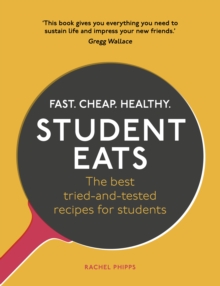
Student Eats
Phipps, Rachel
Paperback / softback
Many students survive on pasta and cheese laden meals which are nutrition-poor and can affect their studying. A lot of the time it is because they don't know how to eat fast, cheap, and healthy all at the same time, and this book is brilliant as it offers recipes using minimal utensils and affordable ingredients to make recipes like Kitchen Cupboard Fishcakes. There’s also a sweet section – Banana and Nutella Muffins anyone?
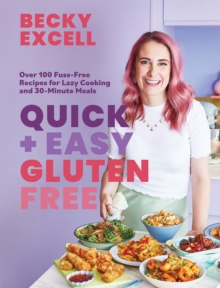
Quick and Easy Gluten Free (The Sunday Times Bestseller)
Excell, Becky
Hardback
Following a gluten free regime can feel daunting on a budget, but author Becky Excell gives advice on store cupboard ingredients to stock up on, and easy alternatives to more expensive gluten free products. Recipes include using a slow cooker, air fryer and pressure cooker – all appliances that can keep costs down.
More Details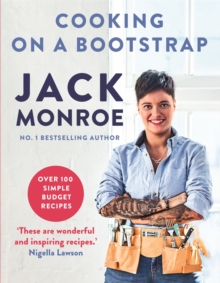
Cooking on a Bootstrap
Monroe, Jack
Paperback / softback
Jack Monroe is a cookery writer and anti-poverty campaigner. Jack has lived through poverty and learned that you can make decent, healthy & sustaining food with cheap ingredients which are often tinned or frozen, and with the minimum of kitchen equipment. She shares some of her creative and accessible recipes in this book, which are written in a no-fuss style. A lot of the recipes are vegetarian too like Spiced Cauliflower, Butter Bean and Almond Soup and the Spicy Carrot and Chickpea Soup.
More Details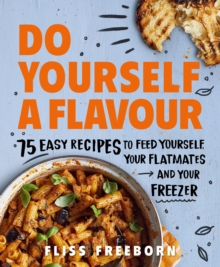
Do Yourself a Flavour
Freeborn, Fliss
Paperback / softback
We picked this title as our non-fiction Book of the Month when it was published in July this year. Fliss Freeborn is the author of the Student Cuisine for the Gloomy Teen blog - where she shares her recipes accompanied by a hefty side-salad of surrealist humour. Her first book is packed with over 75 recipes like Puff Pastry Pizza Florentine and Mushroom, Ale & Lentil Pie. Also included are tips and tricks to turn leftovers into meals and how to make something to eat for, as Fliss calls it, those quick fridge-to-face moments!

5 Ingredients - Quick & Easy Food
Oliver, Jamie
Hardback
This brilliantly uncomplicated book by legendary Jamie Oliver does what it says – it keeps shopping lists and recipes quick and easy, yet produces food that will impress your friends like Easy Sausage Carbonara. If you like this one, there is also a brand new one, with a Mediterranean spin.
More Details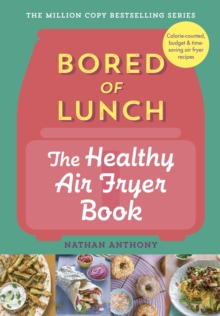
Bored of Lunch: The Healthy Air Fryer Book
Anthony, Nathan
Hardback
If you are going to invest in a gadget and have gone for an air-fryer then it is worth looking at a recipe book to broaden your repertoire, and we like Bored of Lunch, which are home cook Nathan Anthony’s hugely popular accounts on Instagram and TikTok. Featuring accessible, healthy recipes like Sweet Potato Katsu Curry (yes, please!) there is also a Bored of Lunch: Slow Cooker book from Nathan if that is your gadget of choice.
More Details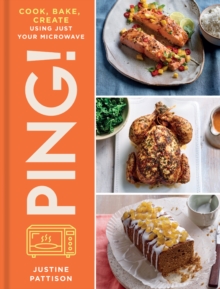
PING!
Pattison, Justine
Hardback
Students who don't often have access to ovens in a hall of residence may have a microwave and this great cookbook by veteran cookery author Justine Pattison shows how to use your microwave to cook modern and fresh recipes in a flash. A wide range of recipes are included, from Super Quick Chilli to Cinnamon Apple Cake. You can even ‘roast’ a chicken in 40 minutes!
More Details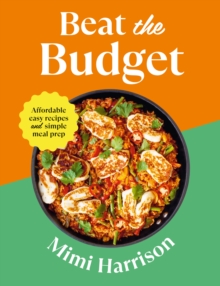
Beat the Budget
Harrison, Mimi
Paperback / softback
What I like about this cookbook is that it not only delivers great recipes at £1.25 per portion, but also includes meal plans and shopping lists to help you. There is also a ‘Fakeaways’ recipe section where you can re-create your favourite takeaway meals at a fraction of the price!
More Details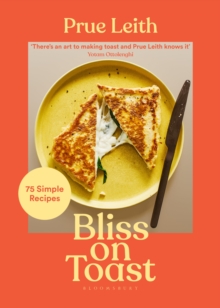
Bliss on Toast
Leith, Prue
Hardback
Perusing cookbooks shouldn’t always be about budget, but sometimes they are there for inspiration! Bored of the same old cheese and tuna melt sandwich and don’t know what to have for lunch? Then Prue Leith’s Bliss on Toast is just what you need. With recipes like Grilled Chicken Tikka with Yoghurt on Naan or ideas like adding wasabi to avocado this will inspire you to try something new!
I hope our tips have given you confidence that you can eat fast, healthily, and cheaply in your student years.
Happy cooking!
Claudia, Content Selection Team
